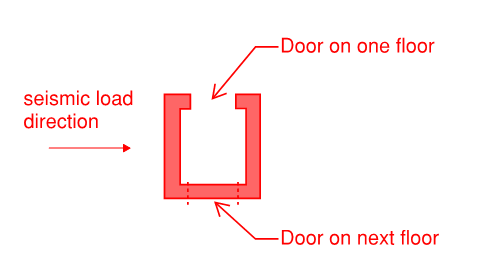Hi everyone,
Does anyone have any experience with elevator shear cores with openings on opposite sites on adjacent floors? I've drawn a little sketch attached to illustrate. Seismic load is the main concern. I'm thinking the continuous flanges can be designed to take out flexure and the floor diaphragms can be designed to transfer shear from the "web" of the wall into the floor diaphragm then back out to the wall "web" on the other side.
All comments are appreciated!

Does anyone have any experience with elevator shear cores with openings on opposite sites on adjacent floors? I've drawn a little sketch attached to illustrate. Seismic load is the main concern. I'm thinking the continuous flanges can be designed to take out flexure and the floor diaphragms can be designed to transfer shear from the "web" of the wall into the floor diaphragm then back out to the wall "web" on the other side.
All comments are appreciated!

